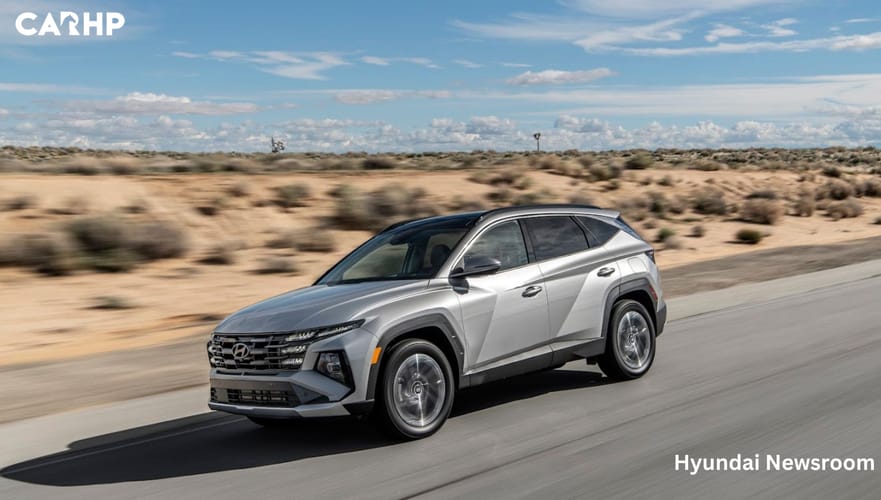Hyundai unveiled the 2025 Tucson and the Santa Cruz for the North American market at the New York International Auto Show. While the Tucson has a lot of new updates, Santa Cruz mainly focuses on an updated interior and the XRT trim which was once an appearance package but is now a trim option. So check out what these Hyundai’s have to offer.
Exterior

While the Tucson gets pretty much the same exterior as last year's variant, its revised exterior still gives it a distinct identity. The front fascia receives a new grille along with a redesigned front bumper and an updated daytime running light signature. The Tucson also receives new alloy wheels, anodized aluminum badging, and a 75-mm longer rear wiper blade. The daytime running lamps in Tucson have also been reduced from ten lighting areas to eight larger units.
The Santa Cruz also receives a new front fascia and grille along with an XRT-exclusive front and rear bumper fascia design. For a better off-roading experience, Hyundai has also added all-terrain tires and unique wrench-inspired 18-inch alloy wheels. With more vertical lines and redesigned headlamps, the new grille is more menacing and incorporates larger chambers.
Interior

The Tucson receives a major redesign for the 2025 year when it comes to the interior. A redesigned panoramic curved display houses a 12.3-inch digital instrument cluster and an enlarged 12.3-inch infotainment display. The center console, steering wheel, and door panel accents also receive redesigns along with a more spacious dashboard. Connectivity options like Wireless Android Auto and Apple CarPlay are standard while a new 12-inch color Head-Up Display (HUD) is available as optional.
Santa Cruz on the other hand offers a high-tech and functional interior. The updates include new steering wheels, new air vents, and new audio/video/navigation and HVAC controls with switches and buttons. At the center, there's the new panoramic curved display that integrates an optional 12.3-inch driver information cluster and an available 12.3-inch audio-video navigation (AVN) system.
Powertrain
Regarding the powertrains of the Tucson, the ICE engine is a 2.5-liter, direct-injected, and multi-port-injected gasoline engine producing 187 horsepower at 6,100 rpm and 178 lb.-ft. of torque at 4,000 rpm. Then there is a hybrid option with a total power output of 231 horsepower and 258 lb-ft of torque. As for the gasoline engine, the Tucson gets a 1.6-liter turbocharged engine that produces 178 horsepower and 195 lb.-ft. of torque. The hybrid setup also includes a 47.7-kW electric motor and a 1.49-kWh lithium-ion battery pack. The Plug-In Hybrid model offers an increased power output from the 1.6-liter turbocharged, direct-injected four-coupled engine mated to a specially tuned 6-speed automatic transmission. Along with it comes a powerful 72.0-kW electric motor producing a total power output of 268 horsepower and 258 lb.-ft. of torque.
As for the Santa Cruz, there are two engine options available. The standard powertrain is a 2.5L direct-injected in-line four-cylinder engine that produces around 191 horsepower and 181 lb.-ft. of torque. Then there’s the 2.5L direct-injected turbocharged engine churning out 281 horsepower and 311 lb.-ft. The turbocharged engine option comes mated to an eight-speed wet dual-clutch automatic transmission.
The 2.5L Tucson models and the Santa Cruz are expected to arrive at U.S. dealerships in June which will be followed by the 1.6L Turbo hybrid and Plug-in hybrid models of the Tucson by late summer.

